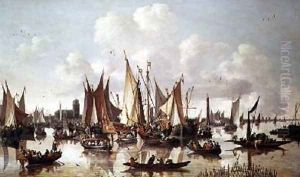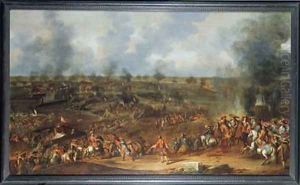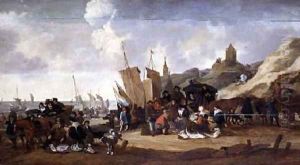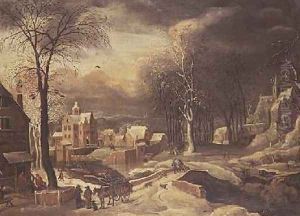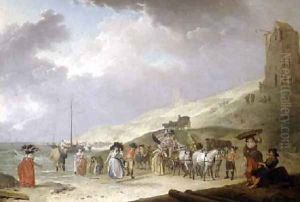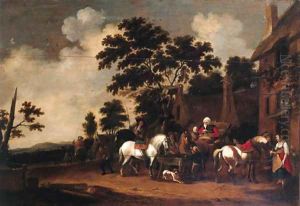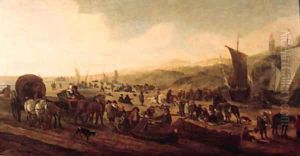Hendrick de Meyer Paintings
Hendrick de Meyer, also known as Hendrik de Meyer or Hendrick de Meijer, was a Flemish painter and engraver primarily recognized for his landscape and cityscape works. Although the exact dates of his birth and death are not definitively recorded, he is believed to have been born around 1620 and to have died around 1689.
De Meyer was born in the city of Antwerp in the Spanish Netherlands (present-day Belgium). During this period, Antwerp was a flourishing center for the arts, and it was within this vibrant atmosphere that de Meyer developed his artistic skills. He likely received his initial training in the workshop of a local master, which was the customary practice of the era for young artists. His work reflects the influence of Flemish and Dutch landscape traditions, which were highly popular among collectors during the 17th century.
His landscapes often feature a high horizon and include rural scenes with cottages, travelers, and extensive detailed renderings of trees and foliage. De Meyer was particularly adept at capturing the play of light and atmosphere, which adds a sense of depth and realism to his works. His cityscapes are marked by an accurate depiction of architecture and urban life, often bustling with figures and activities of daily life.
Not much is known about de Meyer's life outside of his artwork. Documentation regarding his personal life, including his training, clients, or travels, is sparse. Despite this, his works were evidently well-regarded, as they were collected by art connoisseurs of his time and have been preserved in various museums and private collections. Today, Hendrick de Meyer's works are considered valuable examples of 17th-century landscape painting, contributing to our understanding of the period's aesthetic and its influence on the development of European art.
After his death, de Meyer's work continued to be appreciated by collectors and art historians, although he never achieved the same level of fame as some of his contemporaries. His paintings remain of interest to those studying the Flemish and Dutch landscape traditions and the evolution of cityscape painting. His works are part of the collective heritage that illustrates the richness of the Low Countries' contribution to European art history.
